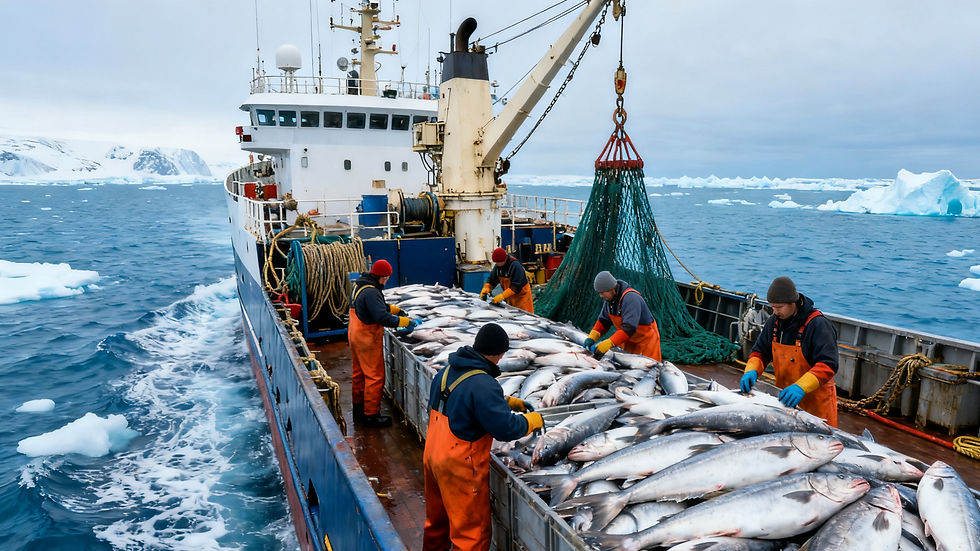Korea’s Frozen Mackerel Imports Up 54% YoY in Jan-Jul 2025: Supply Sources Expand to 12 Countries, Breaking Dependence on Norway
- Easy Seafood

- Sep 10
- 2 min read
In January-July 2025, South Korea’s imports of frozen mackerel reached 39,292 metric tons, a 54% year-on-year increase compared to the same period in 2024 (25,554 metric tons), hitting a five-year high for the same period; the number of supply sources expanded from 5 to 12 countries, marking initial success of its diversification strategy.
1. Surge in Imports: Supply-Demand Gap Drives Procurement Expansion
Core Reason: S. Korea’s domestic offshore mackerel resources have declined due to overfishing and marine environment changes, leading to falling catches and inventory hitting a five-year low; meanwhile, mackerel, a staple ingredient for locals (used in dishes like spicy mackerel soup and grilled mackerel), maintains stable demand.
Source of Growth: Procurement by supermarket chains and catering enterprises surged (prolonged high temperatures in summer pushed up sales of ready-to-eat mackerel by 30% YoY), driving an increase of over 13,000 metric tons in imports.
2. Supply Pattern: Norway Dominates, China/UK/Netherlands Supplement
Norway Remains Core: Supplied 31,530 metric tons, accounting for 80% of total imports (around 85% in the same period of 2024). Relying on high-quality fishing grounds and mature cold chain, it provides large-sized mackerel.
Second Tier: China supplied 3,596 metric tons (9% of total, small-to-medium-sized, for processing); the UK supplied 1,557 metric tons and the Netherlands 1,167 metric tons (both less than 5%, high-value-added products targeting high-end catering).
3. Supply Sources Expand to 12 Countries: Break "Norway Dependence" to Mitigate Risks
Strategic Motivation: Previously, over 80% of imports relied on Norway. In 2024, a temporary cut in Norway’s supply caused a 18% weekly surge in S. Korea’s frozen mackerel wholesale prices, exposing supply risks.
New Suppliers: 7 additional countries including the Faroe Islands, France, Germany, and Russia; Russia offers high cost-effectiveness (similar quality, lower shipping costs), while the Faroe Islands attract purchases with sustainable fishing certifications.
Goal: Reduce Norway’s supply share to below 70% in the future, building a stable "main supplier + multiple supplements" pattern.
4. Future Outlook: Balance Diversification with Quality Control
Quality Control Upgrade: S. Korea Customs has strengthened inspections on frozen mackerel from new supply sources (heavy metals, freezing conditions) to prevent low-quality products from entering the market.
Industrial Opportunities: Expanded imports will support the processing industry, boosting exports of processed products like ready-to-eat mackerel cans (e.g., to Southeast Asia); small and medium-sized suppliers can enter the S. Korean market with differentiated products (organic, refined processing).




Comments